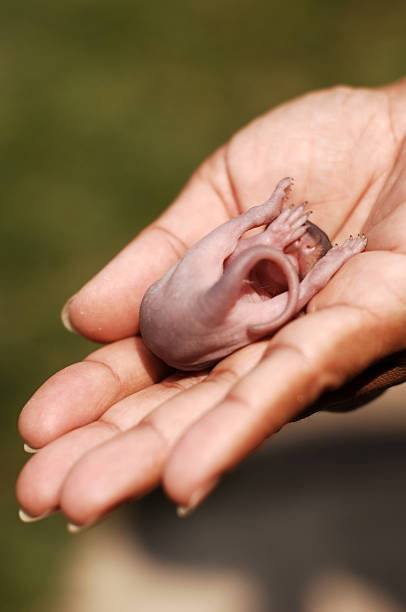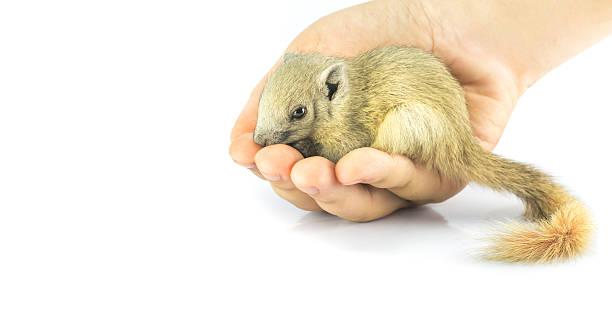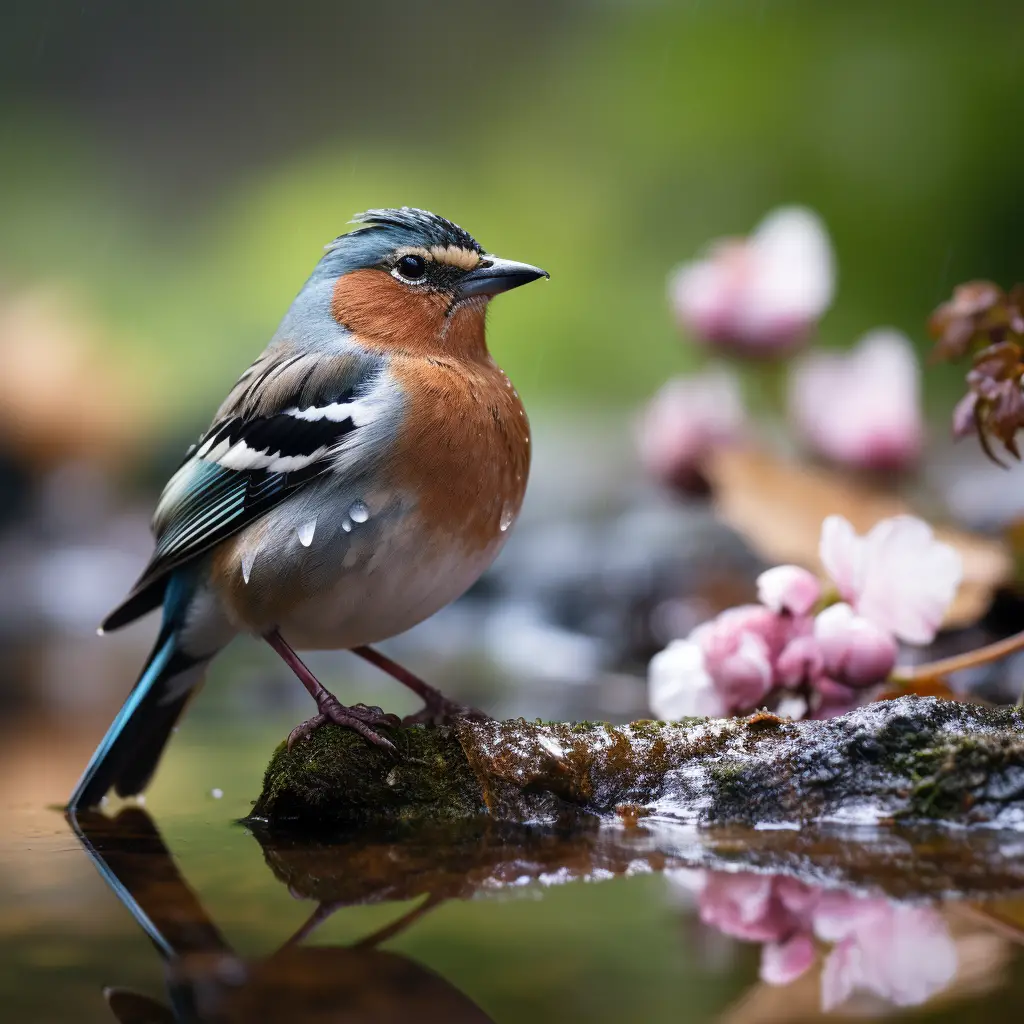
Squirrels, specifically baby squirrels, are often seen as adorable and harmless creatures. These tiny mammals, while fascinating and important members of the ecosystem, can however carry diseases that can be transmitted to humans. Understanding the risks associated with these creatures is important, especially when human interaction is involved.
Characteristics of Baby Squirrels
Physical Attributes and Natural Behavior
Baby squirrels, or kits, are born hairless and with their eyes closed. They begin to venture out of their nests after about seven weeks. During this time, they are more likely to come into contact with humans. However, like all wild animals, they are potential carriers of various parasites and diseases.
Their Role in the Ecosystem
Despite potential health risks, squirrels play a crucial role in our ecosystem. They are known for their habit of burying nuts and acorns, which leads to the growth of new trees. They are also a key part of the food chain, serving as prey for various predators.
Common Diseases Carried by Squirrels

Overview of Diseases
Adult squirrels are known carriers of several diseases including rabies, Lyme disease, tularemia, and leptospirosis.
Diseases Affecting Baby Squirrels
While baby squirrels are not typically carriers of diseases at birth, they can contract and spread diseases if they come into contact with infected adults or through the environment around them.
Transmission of Diseases from Squirrels to Humans
Modes of Transmission
The primary ways diseases are transmitted from squirrels to humans include direct contact (such as bites or scratches), indirect contact (touching objects that an infected squirrel has come into contact with), airborne transmission, and fecal-oral transmission (such as ingesting food or water contaminated with squirrel feces).
Specific Examples of Diseases
The most serious disease squirrels can transmit to humans is rabies. While squirrel-to-human transmission of rabies is rare, it can occur if a squirrel is infected. Other diseases like tularemia, Lyme disease, and leptospirosis may also be transmitted under specific conditions.
The Risks of Human Interaction with Baby Squirrels
Risks Associated with Handling
Handling baby squirrels, or any wild animals, can pose several risks to both humans and the animals involved.
For humans, one of the primary risks is the potential transmission of diseases and parasites. Baby squirrels can carry diseases such as rabies, Lyme disease, and tularemia, and even something as minor as a scratch or bite can be a vector for disease transmission. In addition, parasites such as fleas or ticks that the squirrel may carry can also spread diseases.
Beyond the health risks, handling a baby squirrel can also lead to a defensive response from the animal, such as biting or scratching, which can cause injury.
For the baby squirrels themselves, handling by humans can be highly stressful and potentially harmful. Baby squirrels are fragile, and inappropriate handling can easily cause physical injury. Furthermore, human scent can deter the mother from reclaiming her babies.
Lastly, frequent human interaction can habituate squirrels to humans, making them less wary and potentially leading to problematic behavior. For instance, squirrels that are used to humans might venture into human spaces in search of food, leading to conflicts and potential harm to both the squirrel and humans involved.
Therefore, it’s recommended to leave wildlife alone whenever possible and to seek professional help if a baby squirrel or other wild animal appears to be in distress.
Furthermore, handling baby squirrels or other wildlife can inadvertently disrupt natural behaviors and cycles. This can have negative impacts on the long-term survival skills of these animals. For example, animals that are hand-reared by humans might not learn essential survival skills like finding food or avoiding predators, making it difficult for them to survive in the wild if they are eventually released.
In some cases, handling baby squirrels might also violate local or regional laws and regulations. Many regions have laws that prohibit the keeping of wildlife without a proper license, and these laws are in place to protect both animals and people. Violating these laws can result in penalties and even legal action.
In summary, handling baby squirrels comes with significant risks and potential consequences, both for the person doing the handling and for the squirrels themselves. It’s important to remember that while these animals may appear cute and harmless, they are wild animals and should be treated with caution and respect. If you find a baby squirrel that appears to be in need of help, the best course of action is usually to contact a local wildlife rehabilitator or another animal professional. They can assess the situation and take appropriate action to ensure the safety and well-being of all involved.
Case Studies of Disease Transmission
While instances of disease transmission from baby squirrels to humans are relatively rare, they do occur. There are documented cases of humans contracting diseases such as tularemia and leptospirosis after coming into contact with squirrels.
Prevention and Safety Measures

Importance of Professional Wildlife Handling
Wildlife professionals are trained to handle and treat wild animals in a way that minimizes the risk of disease transmission. If you find a baby squirrel that appears to be orphaned or injured, it’s best to call a local wildlife rehabilitation center rather than attempting to handle the animal yourself.
Prevention Measures
To reduce the risk of disease transmission from baby squirrels or any wild animals, it’s essential to adhere to several key prevention measures. First, avoid direct contact whenever possible. Wild animals should not be handled unless absolutely necessary, such as when they’re in immediate danger. Even in these cases, gloves or cloth should be used to avoid direct contact and reduce the risk of disease transmission.
Maintaining a respectful distance is also important. It may be tempting to pet, feed, or play with wild animals, especially when they appear friendly or helpless. However, it’s crucial for their survival and well-being that they maintain their natural fear of humans. Feeding wild animals can lead to dependence on humans for food, making them more likely to approach human dwellings and increasing the risk of accidents or conflicts.
Additionally, it’s important to maintain a clean and safe outdoor environment. This involves securely disposing of trash and pet food, which can attract squirrels and other wildlife. Bird feeders should be placed out of reach to avoid attracting squirrels.
In the event that a baby squirrel or other wild animal appears sick, injured, or orphaned, professional help should be sought. Local wildlife rehabilitation centers are equipped to care for these animals and can provide advice on what to do.
Lastly, education plays a pivotal role in prevention. Understanding the behaviors of local wildlife and the risks associated with them can significantly reduce potential harm to both humans and animals. Sharing this knowledge with others, particularly children, is an effective way to promote safe and respectful interactions with wildlife.
What to Do if a Baby Squirrel is Found
If you find a baby squirrel, it’s important to respond appropriately and responsibly to ensure the best chance of survival for the squirrel and to minimize the risk of harm or disease transmission to yourself. Here’s a step-by-step guide:
- Observe From a Distance: Baby squirrels may appear to be alone, but the mother is often nearby. Keep a safe distance and observe. If the baby is moving around and appears healthy, it’s possible that the mother will return for it.
- Check for Immediate Danger: If the baby squirrel is in immediate danger (e.g., from traffic or predators), you might need to intervene. Wear gloves to protect yourself, and place the squirrel in a safe spot as close as possible to where you found it.
- Contact a Wildlife Rehabilitation Expert: If the mother does not return after a few hours or if the squirrel appears sick or injured, contact a local wildlife rehabilitation center or a local veterinarian. They will be able to provide guidance or assistance.
- Provide Warmth: If it’s clear that the baby squirrel has been abandoned or is in distress while waiting for a wildlife rehabilitator, you can provide temporary help. Prepare a box with soft cloths and a source of gentle heat, such as a heated water bottle wrapped in a towel.
- Do Not Feed the Baby Squirrel: It’s critical not to feed the baby squirrel unless instructed to do so by a wildlife professional. Incorrect feeding can cause serious harm.
- Hand Over to Professionals: As soon as possible, hand over the baby squirrel to a wildlife rehabilitation center. They are trained to provide appropriate care and will work to reintroduce the squirrel back into the wild when it’s ready.
Remember, baby squirrels, like all wildlife, can carry diseases. It’s important to avoid direct contact with your bare hands. Always use gloves or a cloth, and wash your hands thoroughly after any contact. Also, it’s illegal in many areas to keep a wild squirrel as a pet.
Conclusion
While baby squirrels are adorable and play a crucial role in our ecosystem, it’s important to respect them as wild animals that could potentially carry diseases. Human interactions with these creatures should be handled with caution, and professional guidance should be sought whenever possible. The information in this article provides a basis for understanding the potential health risks associated with baby squirrels, and the precautions one should take to ensure their safety as well as our own.





